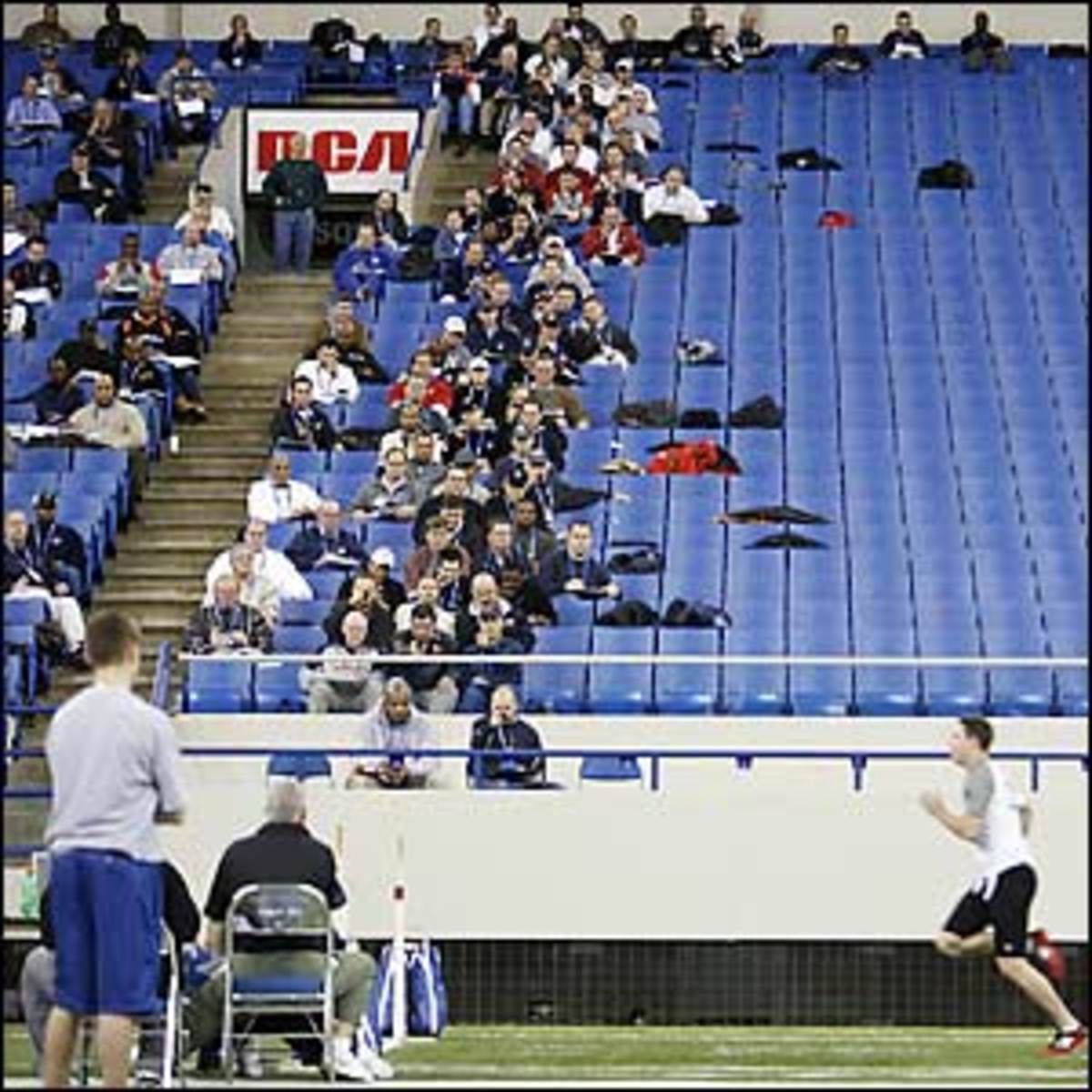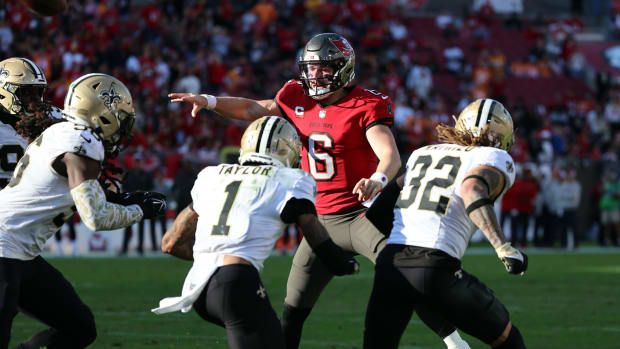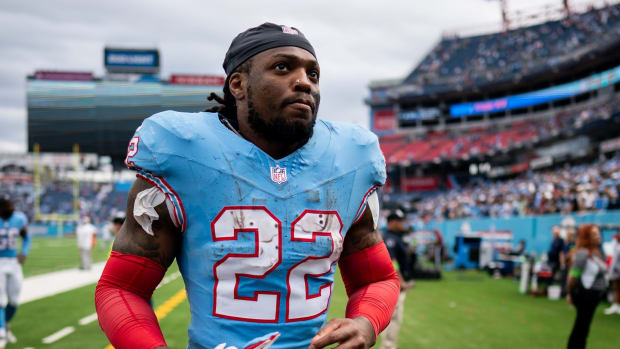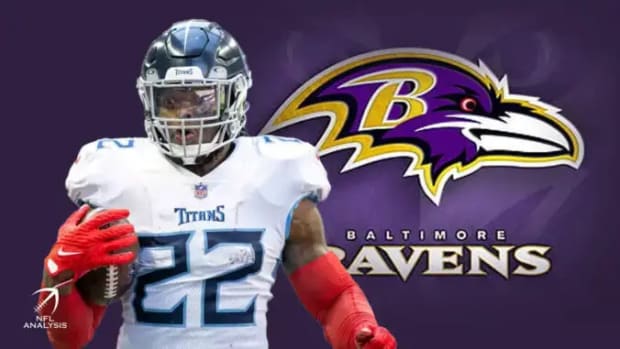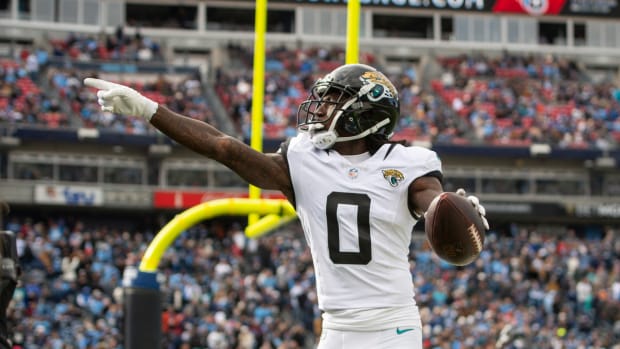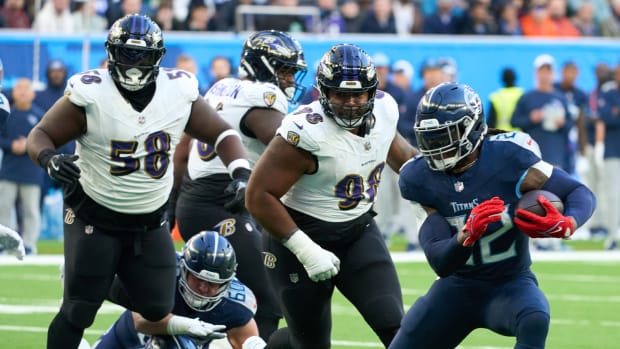Idiot's guide to the combine
Hundreds of NFL draft hopefuls will be working out this week for NFL coaches, scouts and GMs at the annual scouting combine in Indianapolis. SI.com offers a quick guide to how the next week of talent analysis will play out.
When? Feb. 21 through Feb. 26.
Where? Indianapolis Convention Center and RCA Dome
Who? More than 325 of the top NFL prospects available for April's draft. Coaching staffs, personnel departments, scouting departments and medical staffs from all 32 franchises, as well as a large number of team owners and executives. More than 400 members of the media.
In past years a committee of a half dozen people chose who would be invited to the combine. This committee was made up of general managers and combine officials. The process changed this year. The officials of the combine initiated a list of the players they thought were worthy of an invitation to Indianapolis. They then sat down with representatives from the leagues 32 teams and whittled the names down to the final list. Wiggle room was left to offer a few late invitations for deserving players who may have been left off the initial list.
What Will Happen? Players will be brought to the combine by position and stay a total of four days. Positions are brought in by entire units (offensive linemen, defensive linemen, defensive backs, etc.) and are staggered over the six-day period.
During the first three days players are measured and weighed, physically examined, mentally tested and interviewed.
The physical exams include a complete orthopedic check, X-rays and a MRI if a team requests one. Players may be asked to undergo a second physical exam should something show up on their MRI or X-rays. Urine samples are completed during this time, too.
Players also are administered the infamous Wonderlic Personnel Test, which usually occurs on the second day of their combine visit. A 12-minute, 50-question exam, the Wonderlic is used to help assess aptitude for learning a job and adapting to solve problems. It offers NFL teams a barometer of how well players will digest playbooks and adapt to potentially difficult surroundings.
It is also during this time players are asked to participate in the bench press. Except for quarterbacks and place kickers/punters, players are asked to lift as many repetitions as possible on the bench with 225 pounds on the bar.
In this initial period players are interviewed throughout the day by a number of teams. Some players may meet with more than 25 teams, if those franchises have an interest in the prospect's talents and feel they have a chance to select him. The interviews last 15 minutes each, and teams can interview a maximum of 60 players at the combine.
Though possible, it is unusual for a player to deny an interview request or turn down the mental or physical examinations.
The fourth and final day of a combine visits consists of a workout on the floor of the RCA Dome, during which each player is asked to participate in a 40-yard dash, a vertical jump, a broad jump and a three cone exercise, or L-drill. Depending on the position, some players are asked to participate in the 20-yard shuttle run (QB, OL, DL) or both the 20-yard and 60-yard shuttle runs (RB, TE, WR, LB, DB).
While many players participate in the workout, a large number do not. Some cannot due to injury, while others purposely avoid testing in the RCA Dome, preferring an individual or pro-day workout at the comfortable surroundings of their college.
Those are the basics. But each of the moving parts reveals a little something about the inner workings of the NFL. Let's take a look at a few of them.
1. What does the Wonderlic test reveal about a player?
The Wonderlic gives insight into a player's ability to think quickly on his feet, evaluate all of his options and do so in a pressure situation. The 12-minute time limit is designed to offer the same type of pressure a quarterback faces in making a decision under a rush or a linebacker faces in having to quickly pick up assignments in pass coverage.
2. When does a workout carry more weight than a prospect's college track record and when doesn't it?
Combine workouts are as much about perception as anything else. It is similar to projecting a stock; if earnings fall short of projections, the stock falls, but if the earnings come in higher than expected, the stock gains in value. Likewise, if a cornerback runs faster than expected, his draft stock takes off and vice versa.
One need look no further than last April for an illustration of the weight workouts can carry. Cornerback Leon Hall was on the cusp of falling out of the first round after a horrible finish to his college season. He clocked in the mid 4.3s at last year's combine, much faster than anyone anticipated, and ended up as the 18th pick in round 1. Meanwhile, fellow CB Daymeion Hughes, who had a sensational senior season and was projected by many to be a first-round pick, ran a pedestrian 4.69 and fell into the late part of round 3.
3. What can a prospect expect to be asked during a team interview?
No topic is off limits. If a player transferred from one college to another, NFL teams want to know the circumstances surrounding the move. Should a player have been involved in off-field incidents or had legal problems, exact details are required. Family situations, one's upbringing as a child, relationships with college coaches and teammates are all fair game. The list is unending.
4. With so many coaches and scouts about, do NFL personnel men find it hard to safeguard their evaluations?
Except for the general information that most teams receive (background checks on players, results from medical exams, Wonderlic scores) teams are very tight lipped about their final evaluations on players. When different teams speak of a common player it is usually in generalities. Whether the event be the combine or the Senior Bowl, it is not unusual for scouts to be whispering into small, hand-held tape recorders or closely guarding hand-written notes.
5. How much does a good combine workout translate to NFL success and how often does a bad workout translate into a poor career.
Good combine workouts do not guarantee success in the NFL nor does a bad workout ultimately mean a player will fail at the next level. Yet scouting is as much about finding good athletes as it is about unearthing good football players. When all things are equal (technique, work ethic, mental capacity, dedication) the better athlete will win out most of the time. Hence, that is the value of combine workout.
Got a combine question? Send it to siwriters@simail.com. And check SI.com daily for complete combine coverage.
































